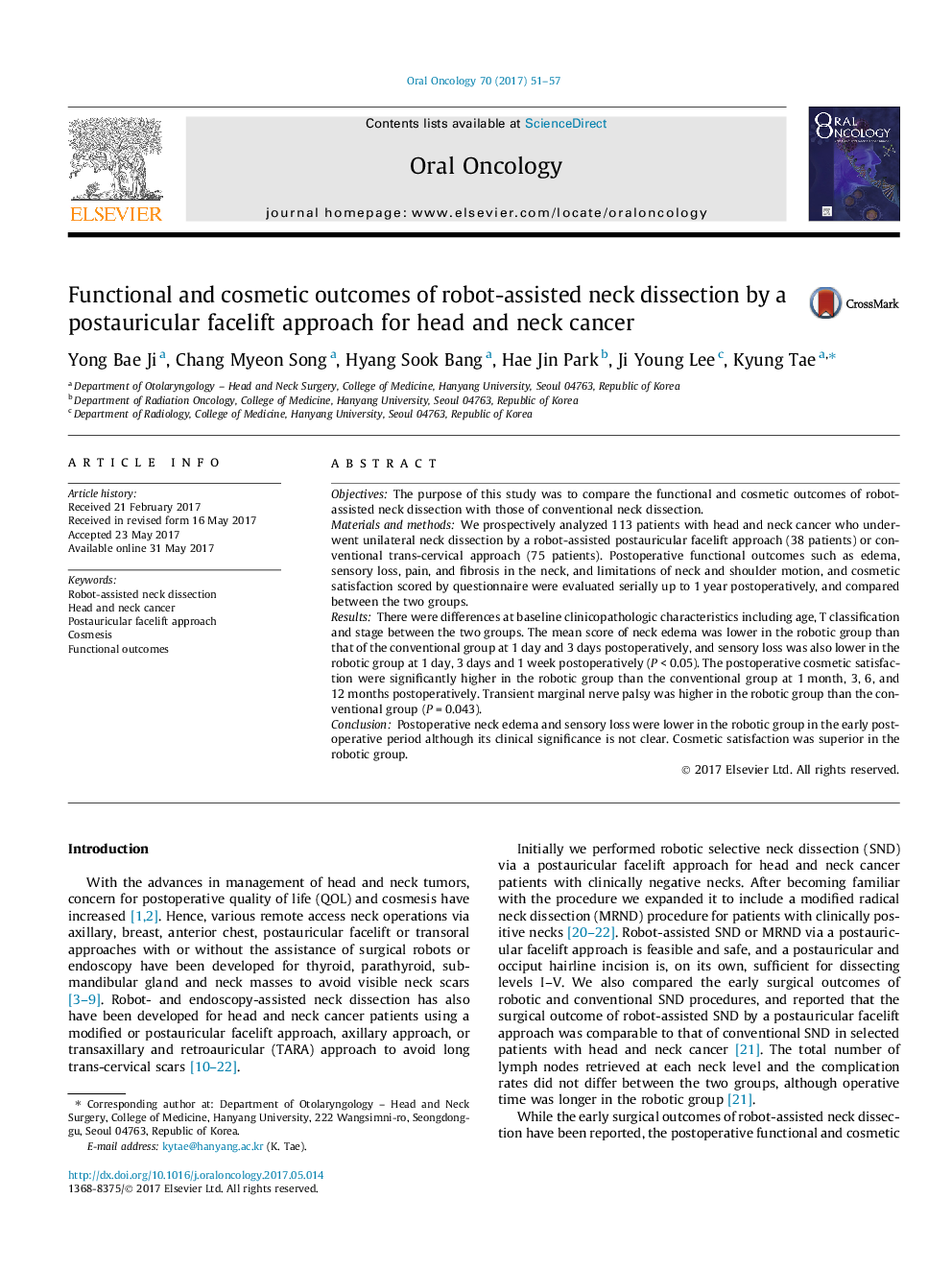| کد مقاله | کد نشریه | سال انتشار | مقاله انگلیسی | نسخه تمام متن |
|---|---|---|---|---|
| 5642462 | 1586240 | 2017 | 7 صفحه PDF | دانلود رایگان |
- Comparison of functional and cosmetic outcomes between robot and conventional ND.
- Neck edema and sensory loss are lower in robotic ND within 1Â week postoperatively.
- Cosmetic satisfaction is significantly superior in the robotic group.
- No difference in neck pain, fibrosis, and limitation of neck and shoulder motion.
ObjectivesThe purpose of this study was to compare the functional and cosmetic outcomes of robot-assisted neck dissection with those of conventional neck dissection.Materials and methodsWe prospectively analyzed 113 patients with head and neck cancer who underwent unilateral neck dissection by a robot-assisted postauricular facelift approach (38 patients) or conventional trans-cervical approach (75 patients). Postoperative functional outcomes such as edema, sensory loss, pain, and fibrosis in the neck, and limitations of neck and shoulder motion, and cosmetic satisfaction scored by questionnaire were evaluated serially up to 1Â year postoperatively, and compared between the two groups.ResultsThere were differences at baseline clinicopathologic characteristics including age, T classification and stage between the two groups. The mean score of neck edema was lower in the robotic group than that of the conventional group at 1Â day and 3Â days postoperatively, and sensory loss was also lower in the robotic group at 1Â day, 3Â days and 1Â week postoperatively (PÂ <Â 0.05). The postoperative cosmetic satisfaction were significantly higher in the robotic group than the conventional group at 1Â month, 3, 6, and 12Â months postoperatively. Transient marginal nerve palsy was higher in the robotic group than the conventional group (PÂ =Â 0.043).ConclusionPostoperative neck edema and sensory loss were lower in the robotic group in the early postoperative period although its clinical significance is not clear. Cosmetic satisfaction was superior in the robotic group.
Journal: Oral Oncology - Volume 70, July 2017, Pages 51-57
